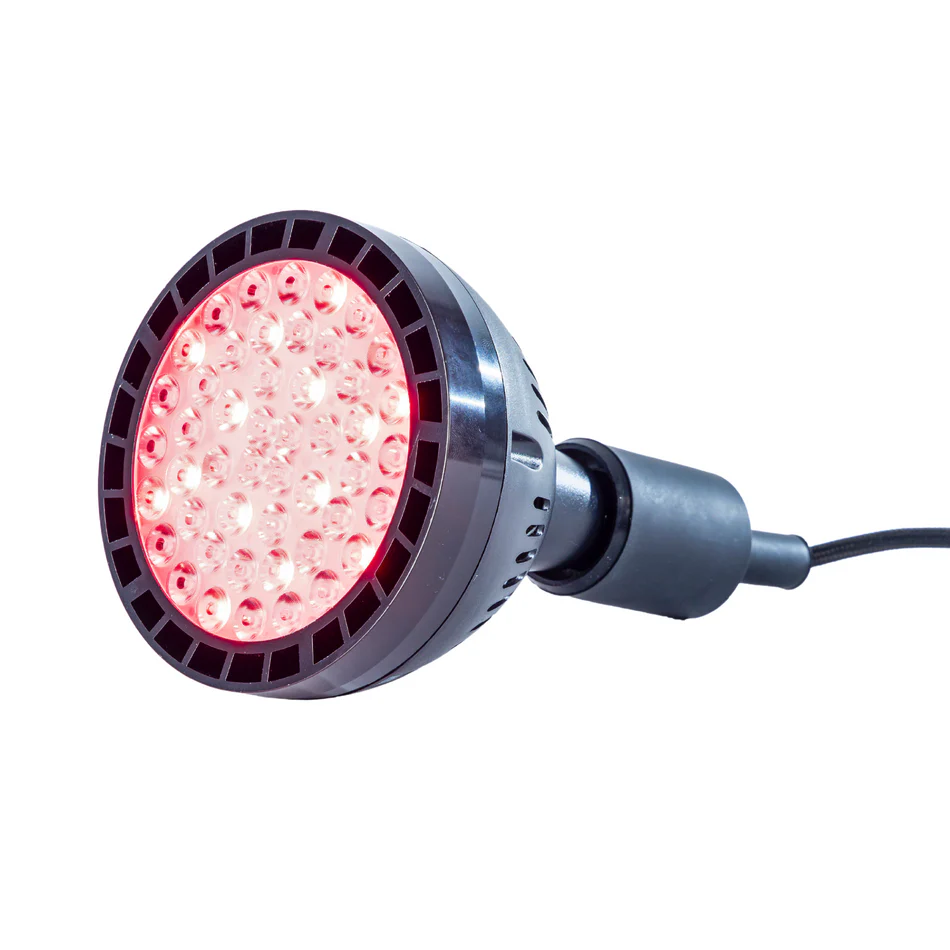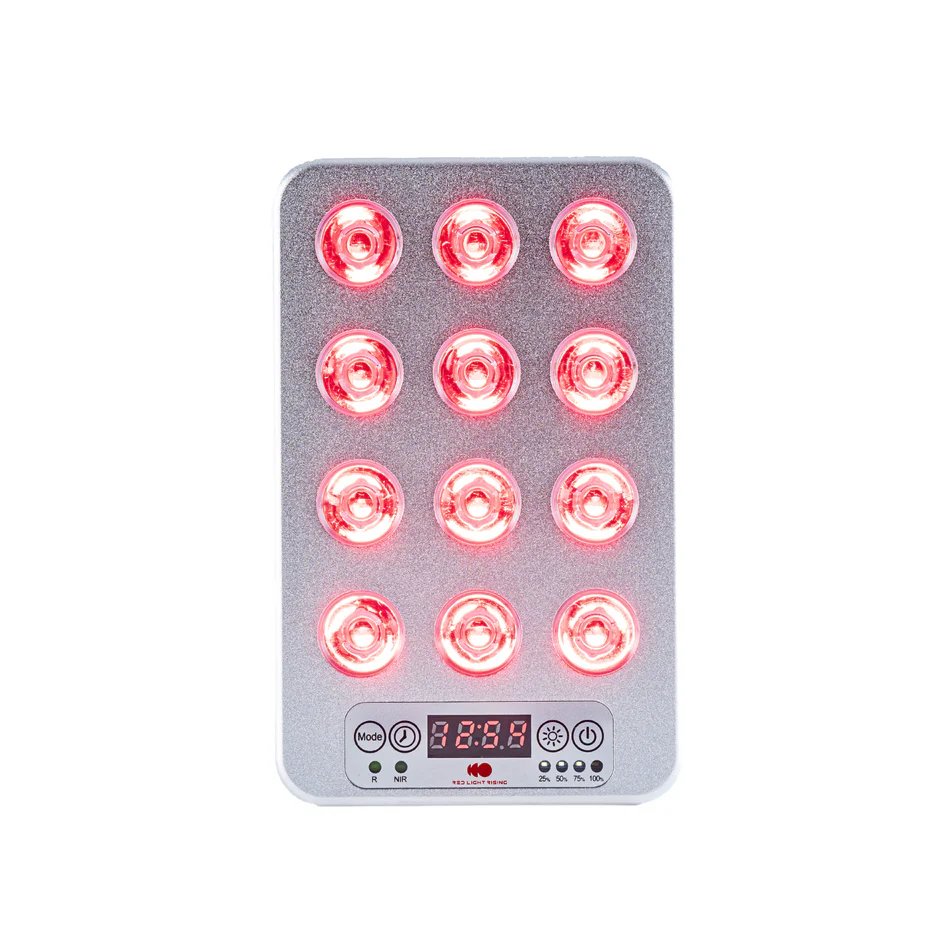Understanding Red Light Therapy
Red light therapy (RLT) is a non-invasive treatment that utilizes low-wavelength red light to promote healing and rejuvenation at the cellular level. The underlying mechanism of action is based on the stimulation of mitochondria, the powerhouse of cells, which absorb the red light and enhance their energy production through adenosine triphosphate (ATP) synthesis. This increase in cellular energy can significantly improve various physiological processes, aiding in wound healing, reducing inflammation, and alleviating pain.
The spectrum of light typically used in red light therapy ranges from 600 to 700 nanometers for red light and 800 to 850 nanometers for near-infrared light. These wavelengths are particularly effective because they penetrate the skin more deeply than visible light, reaching underlying tissues and muscles. As the light penetrates, it initiates a series of biological responses, including increased circulation, collagen production, and the stimulation of fibroblasts, which play a crucial role in the skin’s structure and elasticity.
Historically, red light therapy has roots in the early 20th century, where it was used primarily for skin conditions and wound healing. Over time, advancements in laser technology and an increased understanding of photobiomodulation have allowed RLT to evolve and find broader applications in contemporary wellness practices. Its popularity has surged in various settings, from professional salons to home-use devices, as individuals seek non-invasive solutions for skin rejuvenation, pain relief, and overall wellness.
As more research continues to emerge, the understanding of red light therapy and its benefits is becoming increasingly refined, allowing for enhanced efficacy and personalized treatment options. This modern approach has made RLT an appealing alternative for those looking to harness the power of light for therapeutic purposes.
Health Benefits of Red Light Therapy
Red light therapy (RLT) has gained considerable attention in recent years for its multifaceted health benefits, making it a popular choice for both home and salon use. One of the primary advantages of RLT is its effectiveness in alleviating pain. Numerous studies have indicated that red light can penetrate deeply into the tissues, which may facilitate pain relief in individuals suffering from chronic conditions such as arthritis and joint pain.

Target Light 2.0 – Handheld Red Light Therapy
Price: £199 or 4 interest-free payments of £49.75
Coupon Code: REDLIGHTDISC010
The Target Light 2.0 combines 660nm red light and 850nm near infrared light (NIR), making it perfect for deep tissue treatments.
Disclosure: This is an affiliate link. If you make a purchase, I may earn a commission at no extra cost to you.
By stimulating cellular processes, RLT can effectively reduce inflammation and promote healing, thereby enhancing the quality of life for many patients. Beyond pain relief, red light therapy is renowned for its skin rejuvenation properties. The therapy encourages collagen production and promotes cellular regeneration, which can lead to improved skin tone and texture. Users often report a reduction in wrinkles and fine lines, making RLT a sought-after option for those looking to enhance their skin’s appearance. Furthermore, its efficacy extends to a range of dermatological conditions, including psoriasis and eczema, with many individuals finding relief through consistent treatment.
Another area where red light therapy has shown promise is in muscle recovery. Athletes and fitness enthusiasts frequently turn to RLT to speed up recovery from intense workouts. This therapy aids in reducing muscle soreness and stiffness, allowing individuals to return to their routines more swiftly. Additionally, there is mounting evidence suggesting that red light therapy may promote hair growth in individuals experiencing hair loss. By stimulating the hair follicles, RLT can promote a healthier scalp and potentially enhance hair density.
In summary, red light therapy offers a diverse array of health benefits, from pain relief to skin rejuvenation, muscle recovery, and support for hair growth. Individuals with various conditions have found significant relief, supported by a growing body of research and expert endorsements.
Devices for Home and Salon Use
Advantage Red Light Therapy Wrap
Comfort & Flexibility with Red Light Therapy – Anytime, Anywhere
Experience soothing, flexible red light therapy with the Advantage Red Light Therapy Wrap.
This cordless, wearable device combines 160 red (660nm) and 320 near-infrared (850nm) LEDs for targeted comfort wherever you need it.
Take your red light therapy wrap to the gym, office, or wear it at home—perfect for soothing sore joints, tight muscles, and everyday aches wherever you need it most.
Price: £297.00
Coupon Code: REDLIGHTDISCO10
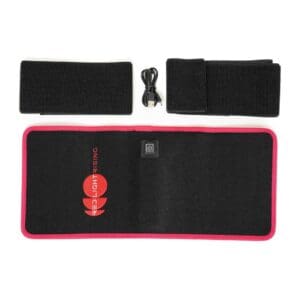
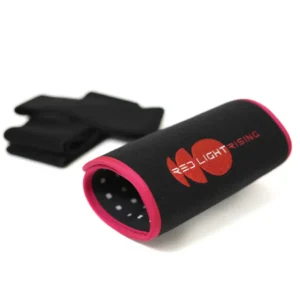
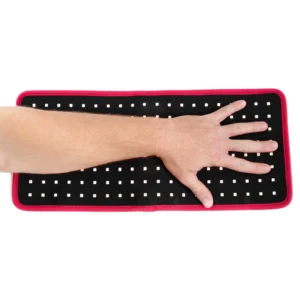
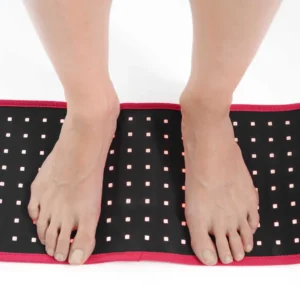
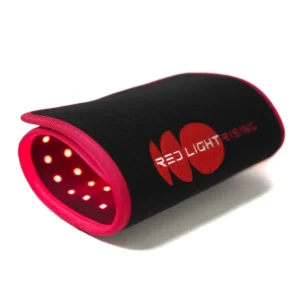
Disclosure: This is an affiliate link. If you make a purchase, I may earn a commission at no extra cost to you.

Red light therapy has gained significant popularity, leading to the emergence of various devices designed for both home and salon use. These devices work by utilizing specific wavelengths of light to promote healing, reduce inflammation, and enhance overall skin health. When considering a red light therapy device, it is essential to distinguish between those intended for personal use at home and the more potent options typically available in professional settings such as salons and clinics.
Home-use devices often come in the form of handheld gadgets, light panels, or masks. They are designed for ease of use and accessibility, catering to individuals who wish to incorporate red light therapy into their daily routine.
These devices typically have lower power outputs and are portable, making them convenient for personal treatment. Key factors to consider when selecting a home device include the wavelength of light emitted, treatment area coverage, and safety features, such as auto shut-off options and built-in timers.
Target Light 3.0 Handheld Portable Red Light Therapy
Price: £240.00
Coupon Code: REDLIGHTDISC010
This red light therapy device is perfect for targeted treatment and deep tissue rejuvenation.
Disclosure: This is an affiliate link. If you make a purchase, I may earn a commission at no extra cost to you.
In contrast, professional-grade red light therapy devices found in salons and clinics offer higher intensities and may incorporate additional technologies, such as infrared light. These devices are often larger and require trained professionals to administer treatments effectively. When evaluating treatment options in a salon, it is crucial to inquire about the device’s FDA approval status as well as its clinical efficacy. Advanced technology in red light therapy is continually evolving, improving therapeutic outcomes and patient experiences.
Ultimately, choosing the right red light therapy device, whether for home or salon use, hinges on individual treatment goals, budget constraints, and personal comfort with the technology. As consumers become more informed about the benefits of this therapy, the demand for reliable, effective devices continues to grow, reflecting the significance of safety and efficacy in this innovative field.
The Role of Red Light Therapy in Stem Cell Activation
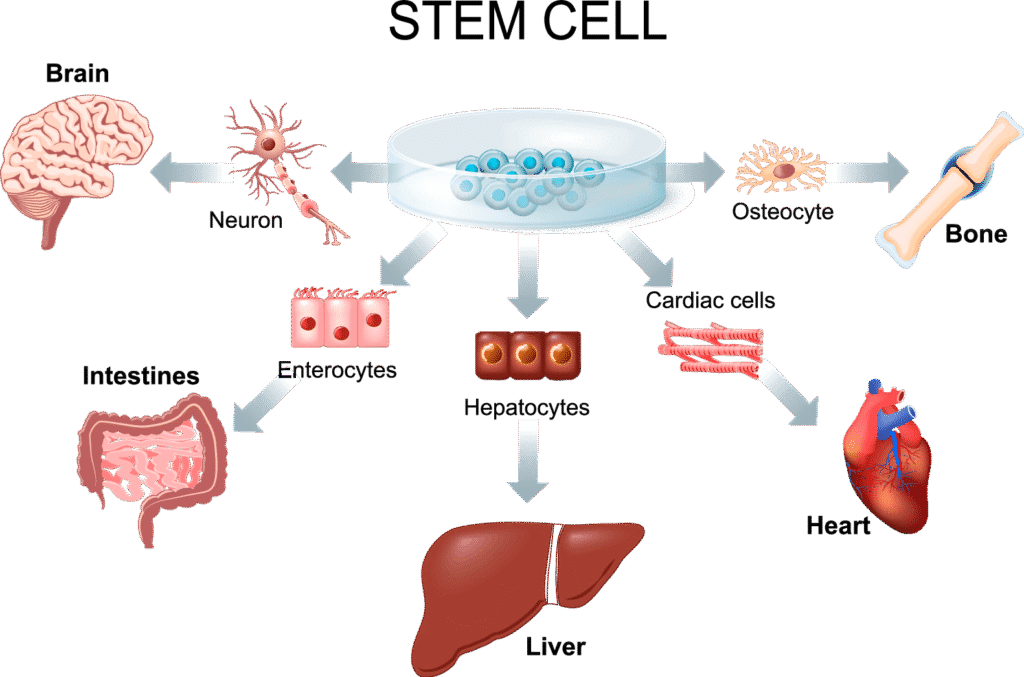
Red light therapy (RLT) has gained significant attention within the field of regenerative medicine due to its notable effects on stem cell activation. Research suggests that exposure to specific wavelengths of red light stimulates cellular processes that are essential for the proliferation and differentiation of stem cells. This activation is particularly relevant in the context of healing and tissue regeneration, as stem cells are integral to these processes.
Studies have demonstrated that red light, particularly in the ranges of 600 to 1000 nanometres, can enhance mitochondrial function. This improvement leads to increased adenosine triphosphate (ATP) production, which is critical for cellular energy. With enhanced energy levels, stem cells are more likely to activate, proliferate, and differentiate into various cell types needed for tissue repair. For instance, a study published in the journal “Stem Cells” indicates that red light therapy not only accelerates the growth of stem cells but also supports their functionality in regenerative processes.
Furthermore, red light therapy has been indicated to promote the secretion of growth factors and cytokines, which play a vital role in the healing process. These biochemical markers encourage communication between cells and help regulate signalling pathways that are pivotal for tissue repair. Research conducted at the University of California further highlights how red light therapy can increase the differentiation of mesenchymal stem cells into osteoblasts, the bone-forming cells, thus suggesting its potential role in bone healing therapies.
In summary, the intersection of red light therapy and stem cell activation presents a promising avenue for advancing regenerative medicine. By harnessing the power of red light, researchers and practitioners may unlock new strategies for enhancing healing and recovery, making this therapy an exciting area for future exploration.
If you’re interested in boosting your body’s regenerative potential, check out Cerule supplements — specially formulated to support stem cell release, circulation, and overall wellness. These science-backed blends are a great addition to any red light therapy routine.
Red Light Therapy Devices FAQ
Red light therapy (RLT) is a non-invasive treatment that uses low-wavelength red light (600-700 nm) and near-infrared light (800-850 nm) to stimulate healing and rejuvenation at a cellular level. The primary mechanism involves the absorption of this light by the mitochondria within cells, leading to increased production of adenosine triphosphate (ATP), the cell’s main energy source. This boost in cellular energy enhances various physiological processes, including wound healing, inflammation reduction, and pain alleviation. The light penetrates the skin, reaching underlying tissues and muscles, and triggers biological responses such as increased circulation, collagen production, and the stimulation of fibroblasts, which are crucial for skin structure and elasticity.
Red light therapy offers a range of health benefits. It is effective in alleviating pain, particularly chronic pain from conditions like arthritis and joint pain, by reducing inflammation and promoting healing. RLT is also well-regarded for its skin rejuvenation properties, encouraging collagen production and cellular regeneration, which can improve skin tone and texture and reduce wrinkles and fine lines. Furthermore, it has shown promise in treating dermatological conditions like psoriasis and eczema. Athletes and fitness enthusiasts use RLT for muscle recovery, as it can reduce soreness and stiffness. Emerging research also suggests that red light therapy may stimulate hair growth by activating hair follicles.
Research indicates that red light therapy can significantly impact stem cell activation, which is crucial for healing and tissue regeneration. Exposure to specific wavelengths of red light (600-1000 nm) enhances mitochondrial function in stem cells, leading to increased ATP production. This increased energy makes stem cells more likely to proliferate and differentiate into various cell types needed for tissue repair. Studies have shown that RLT can accelerate stem cell growth and support their functionality in regenerative processes. Additionally, red light therapy promotes the secretion of growth factors and cytokines, which facilitate cell communication and regulate signaling pathways essential for tissue repair.
Red light therapy devices are available for both home and professional use. Home-use devices typically include handheld gadgets, light panels, or masks. They are designed for ease of use, portability, and often have lower power outputs suitable for personal, regular treatments. Key features to consider for home devices include the wavelength of light, treatment area coverage, and safety features like timers and auto shut-off. Professional-grade devices found in salons and clinics generally offer higher intensities and may incorporate additional technologies like infrared light. These devices are often larger and require trained professionals for administration. When considering salon treatments, it is advisable to inquire about the device’s FDA approval and clinical efficacy.
The spectrum of light used in red light therapy primarily ranges from 600 to 700 nanometers for red light and 800 to 850 nanometers for near-infrared light. These wavelengths are particularly effective because they have a greater ability to penetrate the skin compared to other visible light. This deeper penetration allows the light to reach underlying tissues and muscles, where it can stimulate mitochondria and initiate biological responses such as increased circulation, collagen production, and fibroblast stimulation.
Red light therapy has its roots in the early 20th century, where it was initially used mainly for treating skin conditions and promoting wound healing. Over time, advancements in laser technology and a better understanding of photobiomodulation have enabled RLT to evolve and find wider applications in modern wellness practices. Its popularity has grown significantly, with both professional salons and home users adopting it as a non-invasive solution for various health and cosmetic concerns. Ongoing research continues to refine our understanding of RLT and its benefits, leading to improved efficacy and more personalized treatment options.
While pain relief and skin rejuvenation are prominent benefits, research is exploring other potential applications of red light therapy. These include its role in muscle recovery for athletes, where it helps reduce soreness and stiffness. There is also increasing interest in its ability to promote hair growth in individuals experiencing hair loss by stimulating hair follicles. Furthermore, the impact of RLT on stem cell activation suggests potential in advancing regenerative medicine and bone healing therapies. Ongoing studies continue to investigate the broader therapeutic potential of red light therapy.
When selecting a red light therapy device for home use, several factors are important to consider. These include the specific wavelengths of light emitted by the device, as different wavelengths may offer different benefits. The treatment area coverage of the device should align with your needs. Safety features, such as auto shut-off options and built-in timers, are crucial for safe and effective use. It’s also wise to consider the device’s power output, ease of use, portability, and alignment with your budget. Reading reviews and understanding the manufacturer’s reputation can also aid in making an informed decision about the reliability and efficacy of the device.
This short podcast breaks down for content of this page, for those who prefer listening to reading.
